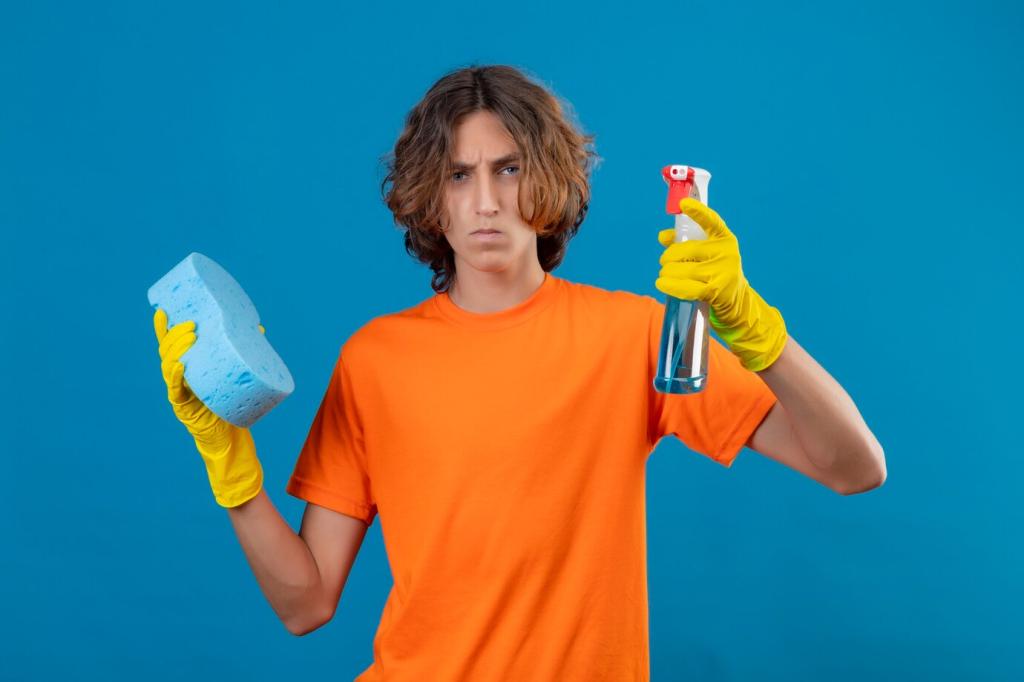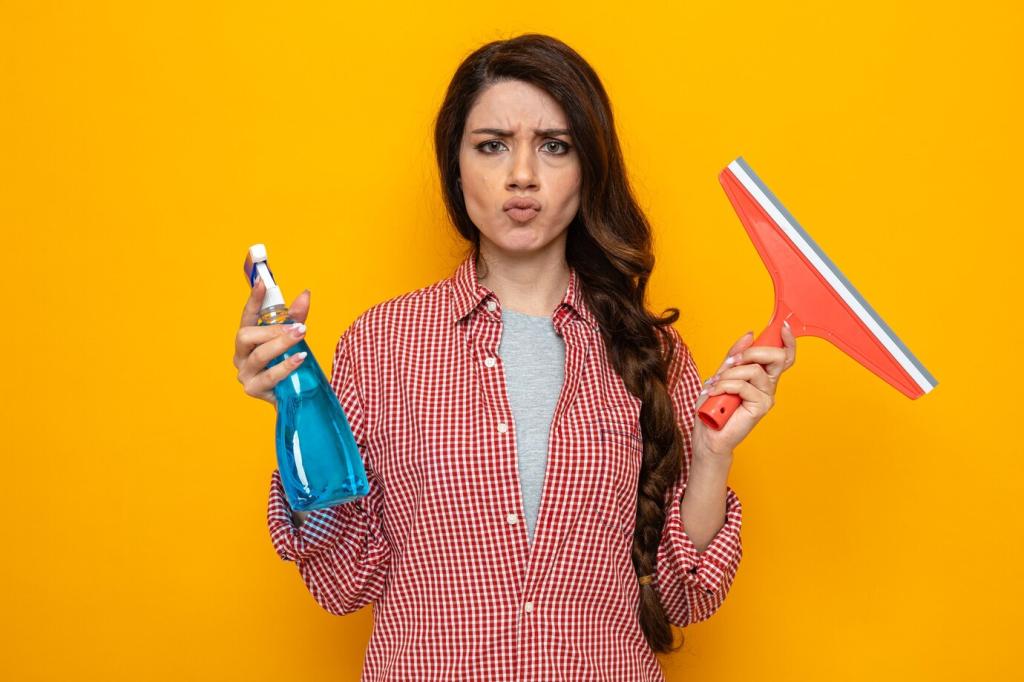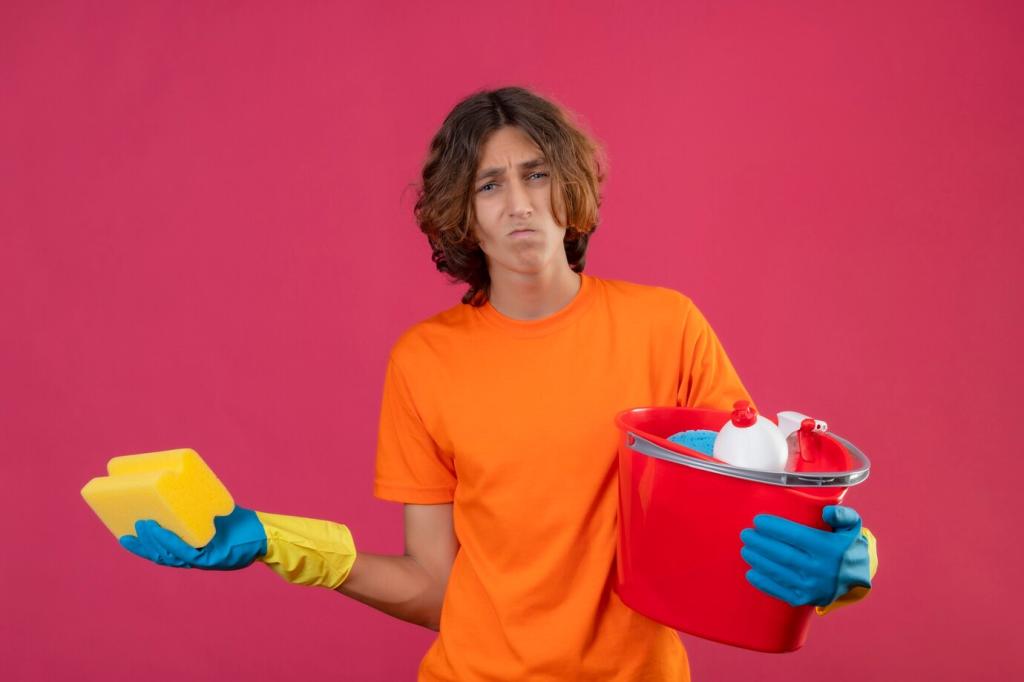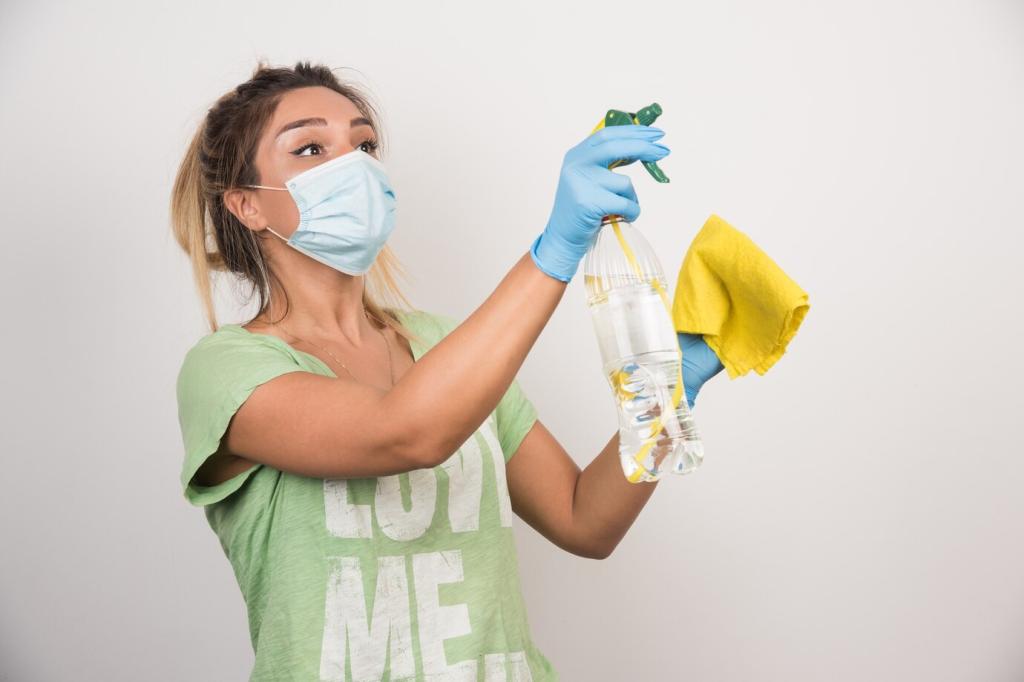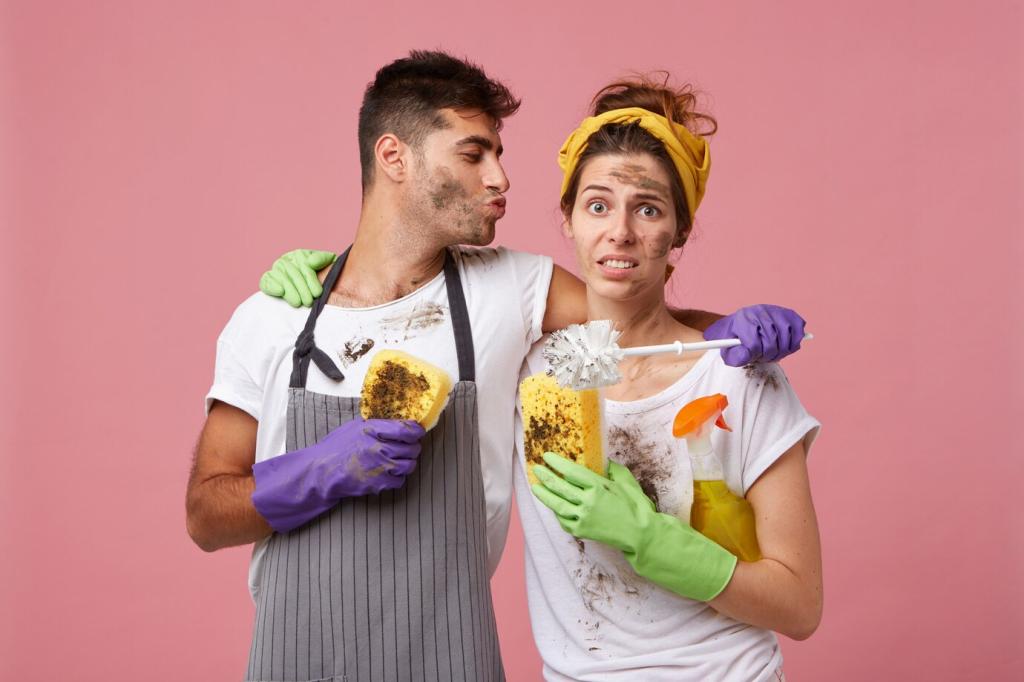Chemistry Partners for Your Tools
Neutral pH pre-sprays (around 6–8) are upholstery-friendly and effective on many food and beverage stains. Enzyme boosters shine on protein-based spills like milk or gravy, but they need proper dwell time and mild temperatures. Tamp gently with a soft brush. What dwell time works best for you on winter hot-chocolate stains?
Chemistry Partners for Your Tools
For ink, cosmetics, and greasy residues, controlled solvent use—such as isopropyl alcohol or citrus-based spotters—can be transformative. For tannins, an oxygen-based spotter helps, but test on natural fibers. Ventilate, wear PPE, and lift softened residues with a bone spatula. Tell us your go-to approach for pen marks on armrests.


